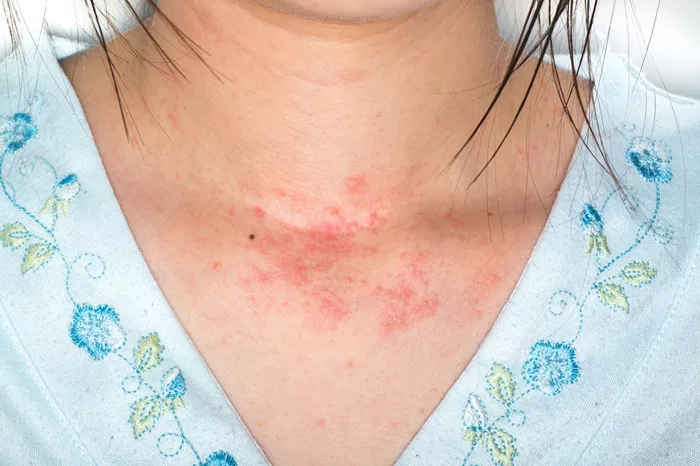Allergic reactions to pets, especially dogs, are common ailments affecting millions of individuals worldwide. Among the various triggers, dog dander stands out as a prevalent allergen. This detailed guide will explore effective strategies and treatments to manage and mitigate symptoms of dog dander allergies, improving the quality of life for those affected.
Dog Dander Allergies
Dog dander consists of tiny, even microscopic, flecks of skin shed by dogs, much like human dandruff. For many people, these particles can cause allergic reactions, which can range from mild to severe. Understanding the nature of these allergies and the ways to manage them is crucial for dog owners and those who frequently come into contact with dogs.
The Science Behind Dog Dander Allergies
To effectively manage dog dander allergies, it’s essential to understand the biological mechanisms behind allergic reactions. Allergies are hypersensitive responses of the immune system to substances that are usually harmless to most people. In the case of dog dander, the immune system mistakenly identifies proteins in the dander as harmful, triggering an allergic reaction.
Identifying Dog Dander Allergy Symptoms
Recognizing the symptoms of dog dander allergies is the first step towards treatment. Common symptoms include:
Sneezing and Runny or Stuffy Nose: Frequent sneezing and nasal congestion are typical reactions.
Itchy Eyes, Nose, or Throat: Allergic reactions often cause discomfort in these areas.
Coughing and Wheezing: These symptoms may indicate that the allergy is affecting the respiratory system.
Skin Rashes: Contact with dander can lead to eczema or hives.
Who is at Risk?
Understanding who is at risk for developing dog dander allergies can help in prevention and early treatment. Individuals with a family history of allergies or asthma are more likely to develop pet allergies. Moreover, constant exposure to pets at a young age might influence the development of these allergies.
Preventive Measures to Reduce Dog Dander Exposure
Prevention is a critical component in managing dog dander allergies. Implementing strategies to reduce exposure can significantly alleviate symptoms.
Regular Pet Grooming: Regularly bathing and grooming dogs can reduce the amount of dander they shed.
Clean Homes Mean Fewer Symptoms: Vacuuming with HEPA filters and using air purifiers can help remove dander from the living environment.
Limiting Dog Access: Restricting dogs from certain areas, particularly bedrooms, can help reduce exposure to allergens.
Choosing Suitable Breeds: While no dog breed is completely hypoallergenic, some breeds are known to produce less dander.
Medical Treatments for Dog Dander Allergies
When preventive measures are not enough, medical treatments may be necessary to manage allergy symptoms effectively.
Antihistamines: These medications can help alleviate sneezing, runny nose, and itching.
Decongestants: Useful for relieving nasal stuffiness and congestion.
Nasal Corticosteroids: These sprays help reduce nasal inflammation associated with allergies.
Allergy Shots (Immunotherapy): A long-term treatment that can lessen or even stop allergic reactions by gradually increasing doses of the allergen.
The Role of Immunotherapy in Treating Dog Allergies
Immunotherapy can be particularly effective for long-term allergy relief. This treatment involves regular injections of the allergen, with the aim of desensitizing the body’s immune response to dog dander.
Lifestyle Adjustments for Living with Dogs
For dog lovers, giving up a pet may not be an option. In this case, making specific lifestyle adjustments can help manage allergy symptoms.
Designate certain areas of the home, such as the bedroom, as dog-free zones to reduce allergen exposure.
Use Hypoallergenic Bedding: Encase mattresses and pillows in allergen-proof covers to reduce exposure while sleeping.
Opt for Hard Surfaces Over Carpet: Hard floors do not trap dander as carpets do and are easier to clean regularly.
Emerging Treatments and Research
Emerging research into dog dander allergies continues to provide new insights into more effective management and treatment strategies. One area of research involves understanding the genetic basis of allergies, which could lead to more personalized treatments.
Support and Resources for Individuals with Dog Dander Allergies
Support from community groups and online forums can be invaluable for managing dog dander allergies. Sharing experiences and tips can provide emotional support and practical advice, making it easier to live with pet allergies.
Conclusion: A Balanced Approach to Managing Dog Dander Allergies
In conclusion, while dog dander allergies can pose significant challenges, a combination of preventive measures, medical treatment, and lifestyle adjustments can effectively manage symptoms. By understanding the causes, recognizing the symptoms, and taking proactive steps, individuals with dog dander allergies can enjoy fulfilling lives with their furry friends by their side.
[inline_related_posts title=”You Might Be Interested In” title_align=”left” style=”list” number=”6″ align=”none” ids=”8292,8287,8283″ by=”categories” orderby=”rand” order=”DESC” hide_thumb=”no” thumb_right=”no” views=”no” date=”yes” grid_columns=”2″ post_type=”” tax=””]

































